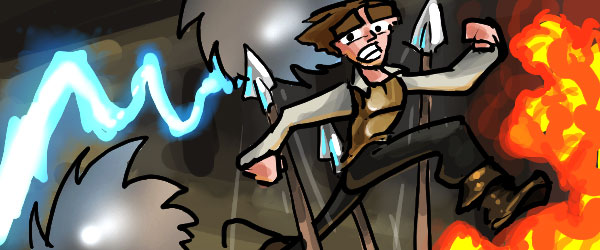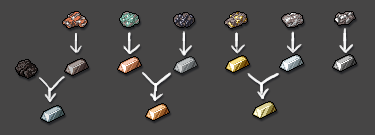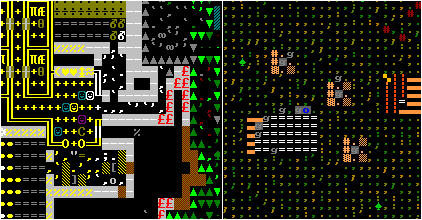I’ve been drawing icons for skill abilities in Dungeons of Dredmor. When creating your character at the start of the game, you choose seven skills for yourself. As you advance these skills through use, you gain new special abilities. Today I’ve drawn up some abilities for the axe skill and will discuss icon images and giving the skills their names.
To quickly take up a tangent on the design decision to have these skill abilities: In RPGs mages have traditionally had the most diverse abilities which translates to having more enjoyable game-choices to make. Do you cast fireball? Teleport? Ice shield? Do you “paralyze nerves, shatter bones, set fires, suffocate an enemy or burst his organs”? Meanwhile, a warrior can choose to either attack or not attack. And why would you ever not attack? Yes, the warrior is ideally more of an item-driven class, but why deny certain character archetypes whole swaths of gameplay, be it special abilities/spells or item management? Compare Diablo 1 with Diablo 2 and you see the solution Blizzard took: Give every class spell-like abilities. (And give every class useful item progression.) New editions of D&D, even, have taken up the spell-like ability for non-magic classes. The lesson is clear: It is important to give the player important decisions to make in the course of playing the game.
And now for the icons:

These are the sub-abilities of the axe skill. Each gives a unique combat effect or shaped area-attack. As originally planned, these icons are displayed at 32×32 pixels in-game, the smaller size in the above sheet, but it does the painted icons some harm to shrink them so much. It might be more appropriate to draw these as native pixel-art at the target resolution (as I did with the spell icons), but I feel it loses some character — and takes a lot longer. Time is money, friend.
As for naming, everything in Dredmor is rightly a bit silly. If a name can contain a pun or a joke, I’m all for it. If it sounds awesomely overblown, it’s good. If it just sounds like it belongs in a cheesy fantasy game, it’ll do. At some point a name feels right, it’s like writing a gag in a comic strip or coming up with a good zinger. This is not to say that everything in Dredmor is really all that good, I’m just trying to do my best with what I can deliver in a reasonable timeline. To borrow a line from Hemmingway, “I write one page of masterpiece to ninety one pages of shit.” … And that goes for the art, too.
Let me take you on a tour of my thoughts about each ability icon.
{ read this article }




